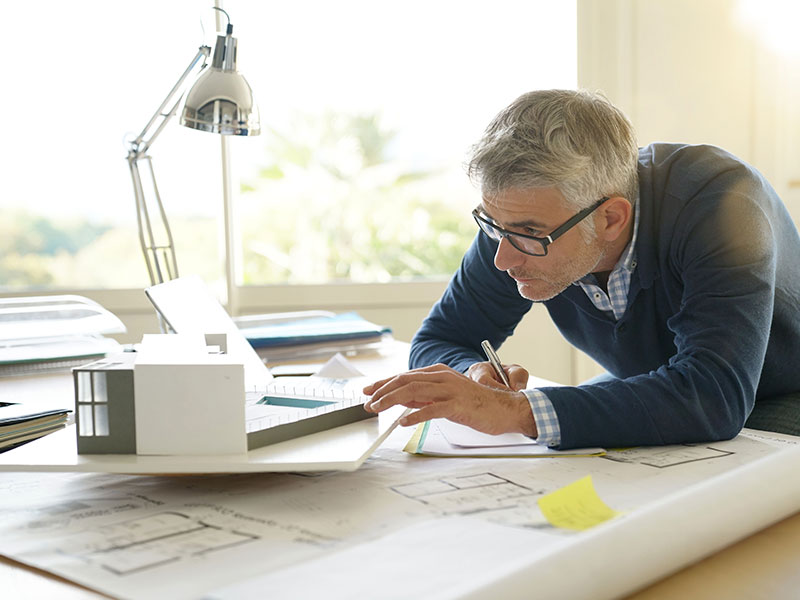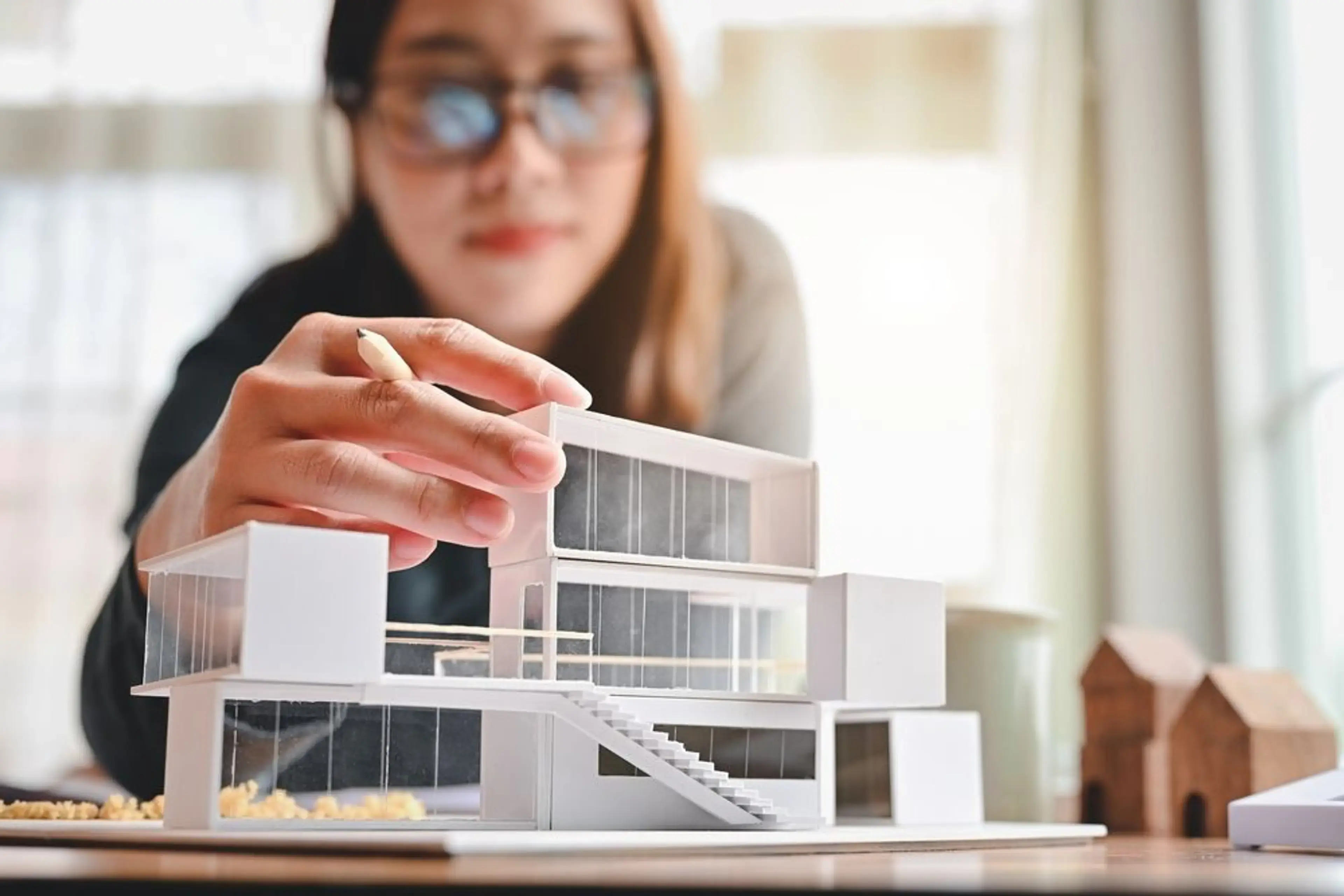Recognizing the Diverse Occupation Paths Available for Aspiring Architect
As an ambitious Architect, you have a world of job paths waiting for you. Each course supplies unique challenges and chances to use your creativity and technological know-how. Whether you're attracted to conventional style or the nuances of lasting layout, there's a specific niche that straightens with your interests. Understanding these diverse alternatives can form your professional journey, yet which direction will you choose to check out initially?
Conventional Architecture: Designing Frameworks and structures
Standard architecture concentrates on developing structures and structures that blend functionality with visual allure. Your layouts can mirror cultural heritage, showcasing neighborhood traditions while satisfying modern needs.
You'll develop abilities in drafting, model-making, and site evaluation, permitting you to envision and interact your ideas effectively. Involving with clients, you'll require to recognize their vision and convert it right into practical designs.
In addition, developing codes and sustainability methods are vital in your work, guaranteeing your frameworks are eco pleasant and safe. As you grow in your profession, you'll discover possibilities in domestic, business, or even reconstruction jobs, each offering special difficulties. Embracing typical design paves the means for a fulfilling job that admires the past while shaping the future.
Urban Planning: Forming Areas and Public Spaces
As a hopeful Architect, you can play an essential function as an urban planner, transforming exactly how areas operate and engage. By utilizing community interaction techniques, you'll ensure that residents have a voice fit their setting. Plus, incorporating lasting design concepts will certainly help create spaces that not only fulfill today's requirements however additionally protect the future.
Duty of Urban Planners
While lots of could assume of engineers as the single enthusiasts behind structures, urban organizers play an essential duty in forming the more comprehensive landscape of communities and public areas. They evaluate land use, zoning legislations, and area requires to develop lasting environments that improve top quality of life. By teaming up with different stakeholders, you'll help create parks, transportation systems, and houses that promote social communication and ease of access. Urban coordinators also concentrate on ecological factors to consider, making certain that advancements integrate environment-friendly spaces and assistance biodiversity. Your expertise in spatial design and area dynamics allows you to visualize future development while maintaining social heritage. In this important function, you'll straight influence how people experience their environments, making every job a chance for positive modification.
Neighborhood Interaction Techniques
Reliable area engagement techniques are crucial for city planners to guarantee that the voices of citizens are heard and valued in the planning procedure. To foster meaningful dialogue, you ought to focus on open online forums and workshops where neighborhood participants can share their concepts and worries. Usage surveys and social networks to get to a more comprehensive target market, ensuring diverse perspectives are consisted of. Collaborating with local companies can boost trust and facilitate much deeper connections. It is very important to provide clear information regarding decision-making processes and proposed jobs, allowing citizens to feel enlightened and empowered. By actively incorporating and paying attention responses, you'll develop areas that mirror the neighborhood's demands, ultimately causing even more effective and sustainable urban atmospheres. Welcome transparency and continual discussion for enduring effect.
Lasting Design Concepts
When designing city rooms, integrating lasting layout principles is essential for creating environments that flourish both ecologically and socially. Consider integrating green rooms, like parks and yards, to improve biodiversity and boost air high quality.
Creating with water preservation in mind is additionally key-- believe about rain gardens and permeable surfaces to take care of stormwater. Involving community members during the preparation procedure assurances that the spaces you create meet their requirements and motivate social interaction. By accepting these principles, you'll contribute to vibrant, sustainable urban landscapes that profit every person.

Landscape Architecture: Developing Lasting Exterior Settings
As you discover landscape architecture, you'll find crucial design principles that produce attractive and functional outdoor spaces. Lasting methods play an essential duty in making sure these environments prosper while minimizing ecological effect. Plus, you'll find a variety of career possibilities that enable you to make a real distinction in how individuals communicate with nature.
Layout Concepts in Landscape
Comprehending layout principles in landscape architecture is vital for creating lasting exterior atmospheres that balance with nature. You'll require to consider elements like equilibrium, scale, and percentage to assure your styles feel cohesive and welcoming. In addition, pay attention to seasonal adjustments, creating with products that enhance the environments year-round.
Lasting Practices Overview
Sustainable methods in landscape style not only concentrate on aesthetics but likewise prioritize eco-friendly health and source preservation. By incorporating native plants, you boost biodiversity and decrease the requirement for chemical fertilizers and pesticides. Implementing efficient watering systems helps save water and lessens drainage, protecting nearby environments. You can make areas that promote soil wellness, such as exercising and making use of natural products permaculture principles. Furthermore, integrating eco-friendly infrastructure, like rainfall gardens and permeable sidewalks, help in stormwater administration and decreases urban heat. When you create outdoor settings with sustainability in mind, you add to a much healthier world and give rooms that foster community connection. Ultimately, these practices assure your styles profit both people and the environment for many years to find.
Profession Opportunities Exploration
With a solid structure in lasting techniques, landscape architecture provides a selection of career paths that permit you to make a significant influence on the environment. Urban planners usually work together with landscape architects to produce eco-friendly rooms in urban settings, boosting city livability. If you're passionate regarding education, think about ending up being a landscape style instructor, motivating future generations.
Sustainable Style: Concentrating on Eco-Friendly Practices
As you discover your occupation in style, embracing environmentally friendly practices can establish you apart in a competitive field. Sustainable style concentrates on developing structures that minimize environmental influence while boosting owner wellness. By incorporating sustainable materials, energy-efficient systems, and go now lasting building techniques, you'll add to a greener future.
Beginning by obtaining understanding of green qualifications like LEED or BREEAM, which can reinforce your credentials. Consider exactly how all-natural light, ventilation, and thermal effectiveness can maximize style. Collaborate with engineers and environmental experts to introduce remedies that lower waste and preserve resources.
Don't fail to remember the importance of community involvement-- interesting regional stakeholders can motivate layouts that balance with try here the atmosphere. As clients significantly focus on sustainability, your proficiency in green methods will certainly not just draw in tasks but additionally fulfill your enthusiasm for liable design. Welcome this important facet of the profession, and view your profession flourish.
Historic Conservation: Shielding and Restoring Social Heritage
While you begin on your building journey, consider the crucial function of historic conservation in maintaining our cultural heritage. This area concentrates on the defense and restoration of considerable buildings, sites, and structures that tell the stories of our past. By involving in historic conservation, you'll help protect the architectural legacy that forms area identity.
As a historic preservation Architect, you'll examine historical relevance and evaluate the condition of structures. You'll work carefully with conservationists and historians to ensure genuine reconstruction strategies are utilized. This career course permits you to blend creative thinking with study, allowing you to make options that value initial materials and craftsmanship.
Your work not only contributes to sustainability by reusing existing buildings yet likewise fosters a sense of pride within communities. Accepting this path will certainly assist you become a guardian of history, maintaining the stories and aesthetic appeals that enrich our lives.
Inside Architecture: Enhancing Indoor Spaces
Historical preservation and indoor style both share a dedication to improving the constructed atmosphere, yet they concentrate on different elements. While historic preservation emphasizes preserving a framework's historic and social value, interior style zeroes in on enhancing interior areas for functionality and aesthetics.
As a hopeful Architect, you'll locate that indoor architecture allows you to blend creative thinking with technical skills. You'll make rooms that not only look great yet additionally promote comfort and effectiveness. This field entails understanding how light, shade, and materials communicate within an area, influencing state of mind and use.
You'll work on various tasks, from domestic homes to commercial offices, making certain that each environment fulfills the requirements of its owners. By focusing on individual experience, you can transform interiors into inspiring and useful areas, making a substantial effect on exactly how people connect with their surroundings. Accept the chance to boost indoor settings and form the way people function and live.
Industrial Layout: Combining Capability With Aesthetic Appeals
Commercial style plays a necessary duty in creating products that perfectly blend visual appeals with performance, making sure that what you make use of daily is not just visually attractive but also sensible. As an ambitious Architect, you can engage yourself in this area, focusing on developing every little thing from furnishings to consumer electronic devices. Your work entails recognizing user demands, materials, and making procedures, allowing you to produce cutting-edge services that boost day-to-day experiences.
In commercial design, you'll often work together with marketing experts, designers, and producers, making sure that your layouts are not just attractive yet additionally possible. This career course supplies a dynamic atmosphere where creative thinking satisfies usefulness, making it a satisfying choice for designers interested in shaping the items of tomorrow.
Often Asked Inquiries
What Educational Certifications Do I Required to Become an Engineer?
To become a designer, you'll require an expert level in design, commonly a Bachelor's or Master's. Additionally, you'll need to complete an internship and pass the Architect Registration Evaluation to practice lawfully.
Are There Accreditation Needs for Various Building Career Paths?
Yes, there're qualification demands for different building paths. Architect. You'll require to pass examinations, full internships, and occasionally go after specialized training, relying on your chosen focus, like landscape architecture, urban style, or historic preservation
What Software Program Abilities Are Important for Designers Today?

Exactly How Can I Gain Practical Experience While Examining Style?
You can get practical experience by interning at architectural firms, joining layout competitors, offering for area jobs, or collaborating with schoolmates on real-world tasks. These opportunities enhance your skills and build important connections in the market.
What Task Opportunities Exist Outside Traditional Architecture Firms?
You can explore numerous task opportunities outside typical architecture companies, like city preparation, More about the author interior decoration, landscape architecture, construction monitoring, actual estate growth, or perhaps functions in sustainability consulting. Each deals unique obstacles and benefits.
Whether you're attracted to conventional style or the subtleties of sustainable style, there's a niche that aligns with your rate of interests.When making urban rooms, including sustainable style principles is important for producing environments that prosper both environmentally and socially.As you explore landscape architecture, you'll uncover important layout concepts that develop attractive and functional outside areas.Understanding design principles in landscape style is necessary for creating sustainable outdoor settings that balance with nature.In industrial layout, you'll often team up with manufacturers, online marketers, and engineers, ensuring that your designs are not only lovely but also feasible.